Your special day’s first “hospitality” begins with an invitation that arrives in your guests’ hands. Not just a piece of paper, but an important messenger announcing the beginning of your journey together. The choice of this invitation can greatly change the impression left in your guests’ hearts.
An elegant gold foil design for a classic hotel wedding, fresh floral patterns for a garden wedding, warm Japanese washi paper with mizuhiki cords for a traditional Japanese wedding… The invitation is not just a simple announcement, but an important item that conveys your uniqueness as a couple.
By paying attention to materials, design, and decorations, you can convey to your guests that “this day is important to us.” In this article, we will thoroughly explain everything from choosing wedding invitations to materials, designs, and the charm of washi paper. This is a must-read for couples who are struggling with invitation selection.
How to Choose Wedding Invitations
Wedding invitations are important items that create the first impression of your ceremony for your guests. From the moment they receive the invitation, guests begin to build anticipation for your wedding. Therefore, it is important to choose invitations that match the overall image of the ceremony.
By paying attention to details such as the invitation design, materials, and wording, you can express your feelings of “welcoming important guests.” When you are struggling with invitation selection, it helps to first clarify your vision of “what kind of wedding you want,” and then select materials and designs from there.
Tips for Matching Your Wedding Theme and Style
The basic approach is to choose wedding invitations that match the theme of your ceremony and the atmosphere of the venue. For example, elegant gold foil and elegant designs are popular for classic hotel weddings, while soft floral patterns and green tones are popular for garden or natural weddings.
If you want to incorporate a traditional Japanese wedding or Japanese style, choosing Japanese motifs such as washi paper, mizuhiki cords, or kimono patterns can create unity and a special feeling. The first step to a satisfying invitation selection is clearly defining “what kind of ceremony you want” and then narrowing down designs and materials from there.
Choosing Based on Guest Demographics and Numbers
Consider the age range and relationships of your guests when selecting invitations. For older guests and relatives, thick paper that conveys formality and quality, along with subdued designs, are often preferred.
On the other hand, for casual parties centered around friends, playful designs and trendy colors are recommended.
Cost is also an important factor when you have a large number of guests. Consider using DIY kits or combining with web invitations to flexibly manage costs.
Points for Creating Originality
To add originality, it’s effective to customize ready-made products or utilize DIY kits. For example, adding original illustrations, photos, or personal messages can make invitations much more personal. It’s also recommended to focus on materials like washi paper, mizuhiki cords, or ribbons. Recently, there has been an increase in vendors offering customization services, where you can specify details down to colors, fonts, and envelope designs. Ordering samples to check the actual products before making a decision is a safe approach.
Types of Wedding Invitation Designs and Materials
Invitation designs and materials have evolving trends each year, with many options available. Recently, elegant cover designs utilizing curves and luxurious designs with gold foil embossing have become popular. Additionally, invitations featuring flower motifs such as mimosa are often chosen, especially for spring and summer weddings.
For material selection, high-quality invitations using premium papers from Italy or Germany have also gained attention.
For Japanese-style aesthetics, modern Japanese designs incorporating kimono patterns and traditional motifs are popular choices that blend Japanese tradition with contemporary sensibilities.
Popular Design Examples and How to Choose
Current trends include covers utilizing curves, gold foil embossing, flower motifs like mimosa, and high-quality designs using premium papers from Italy or Germany.
For Japanese styles, modern Japanese designs incorporating kimono patterns, pressed flowers, and traditional motifs are also popular choices.
When selecting, consider whether it matches the atmosphere of the ceremony and your guest demographics, and pay attention to the texture and impression when holding the invitation.
How to Utilize Mizuhiki Cords and Decorative Items
Decorative items such as mizuhiki cords, ribbons, and gold foil bands add a special feeling to invitations. For traditional Japanese weddings, using red and white or gold and silver mizuhiki cords at the knot can create auspiciousness and formality.
For a natural atmosphere, adding dried flowers or green wreaths is also recommended. The key point with decorations is to avoid overdoing it and to select with an eye for overall balance.
Points for Custom-Made and Customized Invitations
With custom-made or customized invitations, you can specify details down to paper quality, size, and envelope color, not just design. Recently, there has been an increase in services where you can easily order online by selecting a design and entering content.
DIY kits are also abundant, and even beginners can create original invitations with confidence by utilizing templates and samples. When customizing, it’s important to confirm delivery times, minimum order quantities, and additional costs in advance.
Benefits and Charm of Choosing Washi Paper for Wedding Invitations
Washi is a traditional Japanese material that can simultaneously create special formality and warmth when used for wedding invitations. Handmade washi has a different expression in each sheet, leaving a unique texture in guests’ hearts that cannot be found in industrial products.
The impression can vary greatly depending on the production region and pattern, allowing you to choose according to your ceremony theme.
Washi is a material appreciated not only for traditional Japanese weddings but also for natural weddings and as a hospitality item for international guests.
Characteristics and Types of Washi Invitations
The charm of washi lies in its warmth and unique texture characteristic of handmade paper. Handmade washi varies greatly in impression depending on the production region and pattern. Washi is durable and long-lasting, with a smooth touch that creates a sense of quality.
Recently, designs featuring pressed flowers, gold leaf, or textile-like processing on washi have also become popular. They are chosen not only for traditional Japanese weddings but also for natural weddings and as hospitality items for international guests.
Impressions Created by Washi and Effects on Guests
Washi invitations give the impression of a “special day” the moment they are received. The texture, translucency, and delicate patterns of the paper convey a unique luxury and warmth not found elsewhere.
They are also well-received by older guests and relatives as “formal” and “carefully prepared.” International guests appreciate them as items that convey Japanese culture.
Compatibility with Traditional Japanese Weddings and Japanese-Style Weddings
Washi invitations are perfect for Shinto ceremonies and restaurant weddings. They also have excellent compatibility with kimono, Japanese attire, and Japanese floral arrangements, enhancing the overall unity of the ceremony.
Additionally, washi comes in a wide variety of colors and designs, allowing for modern Japanese presentations without becoming too “traditional = old-fashioned.” Combining washi with mizuhiki cords can further enhance formality and elegance.
Trends and Popular Designs for Washi Invitations
The latest washi invitations feature sophisticated designs that utilize Japanese elements, such as “pressed flower motifs,” “traditional patterns × modern colors,” and “round-cut covers.”
There is also a wide variety of color variations, with an increasing number of couples choosing colors to match their ceremony theme, such as soft pink, green, and navy.
Designs that utilize the texture of washi while adding modern arrangements are popular as “invitations that receive compliments.”
Summary of How to Choose Wedding Invitations
The above introduced the theme of wedding invitations. The key points are as follows:
- Match the ceremony theme: Elegant gold foil for classic ceremonies, floral patterns and green tones for garden weddings
- Consider guest demographics: Formal thick paper for older guests and relatives, playful designs for friend-centered events
- Ways to add originality: Adding photos and handwritten messages, creating special feelings through material choices
- Charm of washi: Warm texture, durable and long-lasting, a material that conveys special feeling and formality
- Latest trends: Covers utilizing curves, gold foil embossing, floral motifs, modern Japanese designs
- Mizuhiki cords and decorations: Red and white or gold and silver mizuhiki cords for traditional Japanese weddings, dried flowers or green wreaths for natural styles
- Customization services: Easy online ordering, detailed specifications possible for paper quality, size, and envelope color
- Cost strategies: Flexibly responding while keeping costs down by using DIY kits or combining with web invitations
Wedding invitations are the first “hospitality” for welcoming guests. The key point is to choose based on your ceremony theme, venue atmosphere, and guest demographics.
If you want to add originality, you can increase the special feeling by adding your own touches to ready-made products or including your photos and messages.
Washi paper instantly conveys the impression of a special day with its handmade warmth and texture.
Compare actual samples by holding them in your hands to find the one that conveys your feelings to your guests.

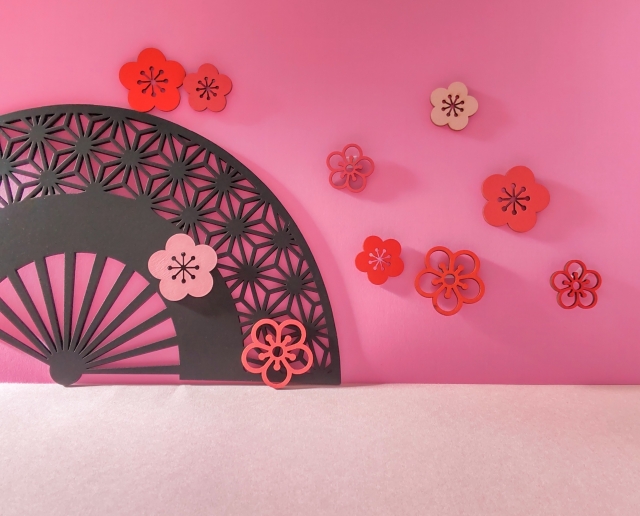
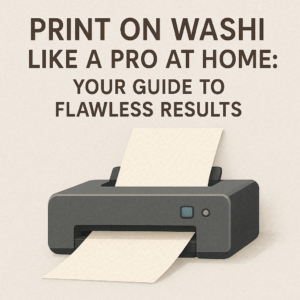


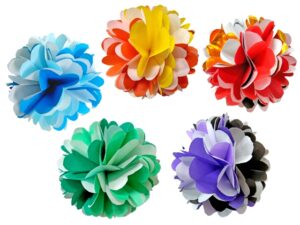
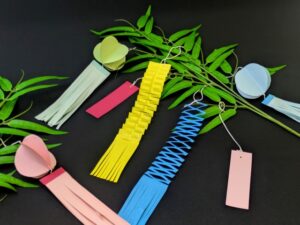
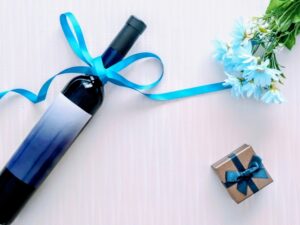
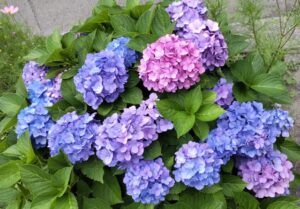
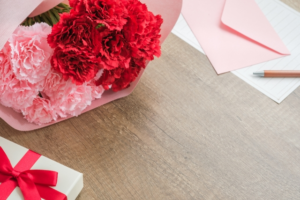
Comments